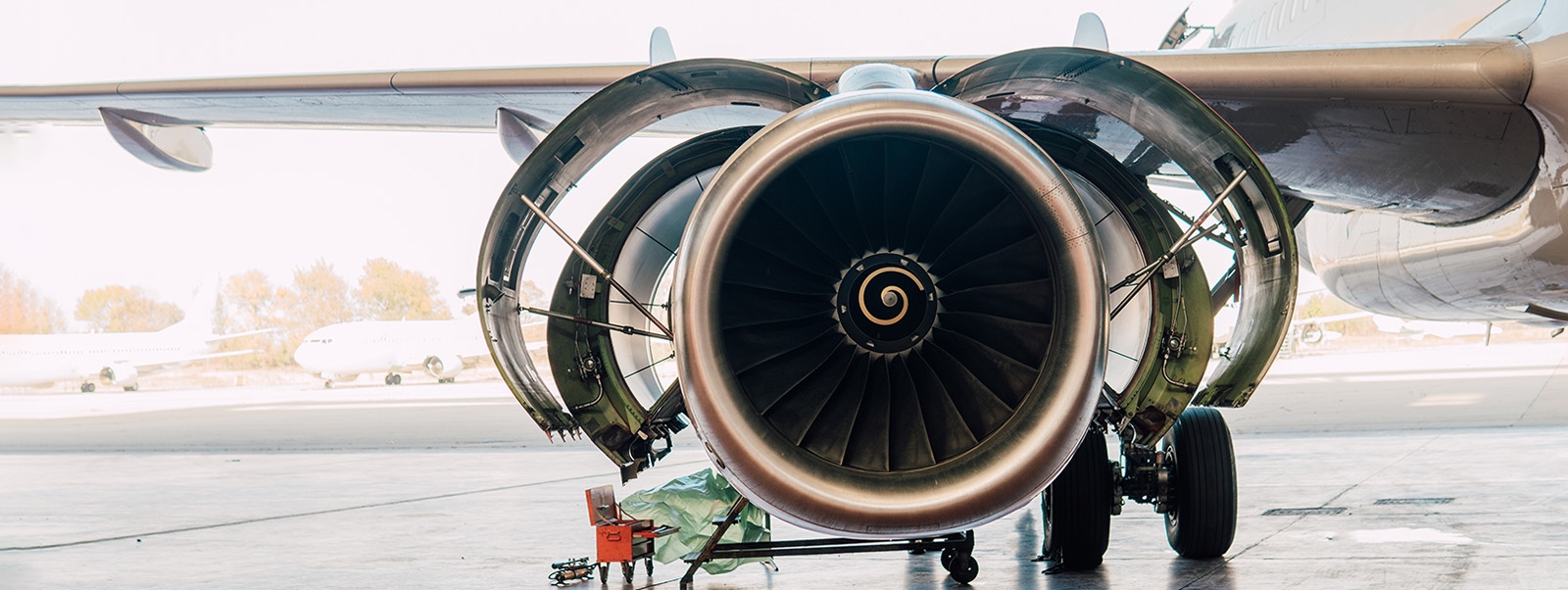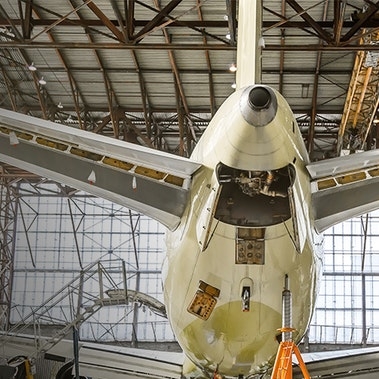To state the obvious, COVID-19 is a “black swan” event that is severely impacting all in the aviation value chain.
For airlines, capacity in June was about 75 percent lower than the same month in 2019, and more than 60 percent of the global fleet was out of service. Production rates for original equipment manufacturers (OEMs) have been cut, with expected deliveries in 2020 more than 55 percent below 2019.
For the first time ever, there is a disconnect between the ability of OEMs to produce aircraft and their customers’ willingness to accept them; Airbus and Boeing will likely be producing at a surplus through 2022 at least. The maintenance, repair, and overhaul (MRO) sector will see a massive drop of 55 percent or more in spend in 2020.
Uncertainty abounds for all, but none more so for those active in the used serviceable material (USM) market. Pre-COVID, there was a shortage of both feedstock and supply of USM. In 2020, there are expected to be an unprecedented 2,500 plus aircraft retirements, compared to the typical 1,100 per annum of recent years.
Huge inventory of parked planes
While there is now a huge and unprecedented inventory of aircraft available for teardown, reduced flying and MRO activity has caused demand for USM to plummet. Never has there been so much disruption in the aircraft and parts trading market, with volatile residual and part values achievable from teardown in freefall. In recent weeks, trading has been virtually dead with nobody buying, nobody selling, and very few paying each other either.
Yet, there is one certainty that OEMs, MROs, and USM players can 100 percent rely on — and hopefully plan for. As flying re-starts, airlines will be laser-focused on lower material costs. With USM an increasingly acceptable lower cost alternative to new OEM parts, demand in that market should be expected to be very strong.
Oliver Wyman forecasts overall aftermarket material spend in 2020 to be $26 billion, down from a pre-COVID estimate of $60 billion. USM will represent 11 percent, or $2.8 billion. In 2019, the total market for parts and materials was $52 billion, of which about nine percent, or $4.7 billion, were USM.
What recovery looks like
As flying and material spend comes back, we expect USM demand to grow significantly at 68 percent per annum through 2022, when its market can be expected to reach $7.9 billion. Similarly, demand for another OEM new part alternative — special repairs (DER) — will grow at around 55 percent per annum.
There are other certainties that players can rely on for the next few years. For example, the narrowbody segment will recover faster than widebodies. The platforms where demand can be expected to be most robust are the A320 family and the 737NG.
Demand for green-time engine offerings will also grow substantially, as will the markets for other expensive-to-overhaul assets such as landing gears and auxiliary power units. Trading for some material classes will disappear, as certain fleets — such as the A380, MD80, 737 Classic, DC-9 — are retired en masse with little chance of substantive MRO activity returning.
Used aircraft parts will represent 11% of total aftermarket materials spending versus 9% in 2019
Strategies and tactics moving forward
USM growth carries specific implications for each of the main participants in the MRO materials market. For all OEMs — whether airframe, engine or component makers — increased USM usage will cut into new parts sales. Given the importance of this revenue stream to overall revenue and margin performance, especially in a period of reduced aircraft deliveries, all OEMs should be developing response strategies as soon as possible.
The intent and focus of each OEM’s strategy will depend on the exposure of its parts portfolios to USM. Potential positioning will range from “light touch” — establishing, for instance, effective intelligence gathering processes — for low-risk part categories, to a more aggressive stance for high-risk part categories. Options for the latter include proactive purchases of USM of their own parts, acquisition or partnering with teardown or USM specialists, or partnerships with MROs.
In addition, OEMs will inevitably take some tactical, product-specific actions involving intellectual property controls, dynamic pricing, or growth in OEM parts supply. For engine OEMs specifically, they have the very real and substantial threat of green-time engines being used as an alternate for engine shop visits. Oliver Wyman recently estimated the competition could result in a $1.75 billion reduction in engine MRO spend.
For non-OEM MROs, the need to contain costs will be even more important than before COVID. To improve competitiveness will necessitate a supply line that gives them access to and use of USM. USM can help reduce prices and/or improve margins on flying hour-based contracts, whether for engines or components. In certain products, better availability of USM can improve turn-times and responsiveness, as well as costs.
Also, because of widespread availability and pressure on asset pricing, certain components will have Beyond Economical Repair (BER) threshold values far below current average costs to repair or overhaul the component. MROs would be wise to deploy operating models which take advantage of USM piece parts to affect returns-to-service at below BER threshold pricing.
Fleet strategies
For airlines considering fleet rationalization, the key challenge is how to maximize USM value as they exit certain aircraft models. Old fleets with no marketability are obvious, but what about fleets that no longer make sense for the operator but still have viable life in them, such as the 777 and A330. Is now the right time to sell these aircraft given current depressed values, or should they hold onto them until flight activity returns? It will depend on the specific aircraft each carrier owns and each airline’s financial strength
A period of significant opportunity lies ahead for the specialist asset management and USM materials supplier with sufficient financial stability and balance sheet strength. This may necessitate securing the right partnerships now to meet the inevitable future demand. In the near term, the importance of being a “smart buyer” and having the necessary technical expertise will never be higher.
Without doubt, this likely demand for USM is encouraging and positive, but it does not remove the important and challenging questions for supply-side participants. For instance, one challenge will be to determine which USM inventory to acquire and at what price. Other pivotal concerns include determining fair-market value of USM and securing reliable access to USM? Does the player have sufficient teardown capacity? When will demand from various platforms return? What will be the impact of green-time assets? And can the necessary finance be raised to support investments in these uncertain times?
The likely fallout
Despite the unanswered questions, trends in the USM market suggest a few likely outcomes. First, the volatility of asset values will result in the fallout of USM providers without sufficient financing and sophistication. Second, the smartest defensive move for OEMs is to become more active in the USM space, which means players should expect to see them there, along with new partnerships and acquisitions. Third, as demand ramps up, potential bottlenecks can be expected to develop in terms of such things as teardown capacity, and participants will need to be prepared to address them. And finally, those who can effectively manage and deploy green-time engine, landing gear, and auxiliary power units will enjoy significant incremental opportunity.
While this is a time of huge uncertainty and risk for those involved in the USM supply chain, a tsunami of demand is on its way in the coming 12 to 24 months. Now is the time to prepare for both the opportunity and the threat.


